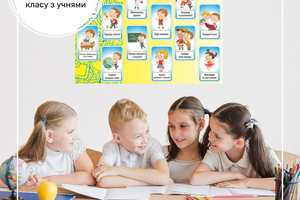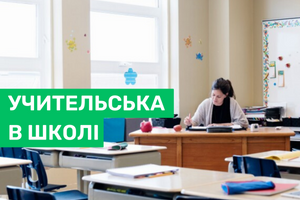CONTENT:
General provisions on working with a child with mutism in a kindergarten/school.
Daily work with a child with mutism
How to evaluate the school success of a child who does not speak?
How to support a child with mutism in the emotional sphere?
A child with mutism and his peers
End

General provisions on working with a child with mutism in a kindergarten/school.
A child with a diagnosis of selective mutism should study in a preschool/school group and receive psychological help. Activities in the institution must be coordinated with therapeutic activities outside it.
In therapy, the participation of parents and teachers, their close cooperation, is very important. Overcoming difficulties in conversation by force and/or without the opportunity to share experiences and information can lead to an increase in the disorder.
The most important indications for teachers who work with a child with selective mutism is to take into account the increased level of fear of speaking. Basic rules:
We do not require the child to speak, do not force verbal contact, do not comment and do not evaluate his difficulties.
We encourage the child to communicate with peers, to participate in classes, but we do not emphasize verbal messages.
We show the child understanding and acceptance of the fact that it takes a long time to start talking. This does not mean that you stop talking to the child (just because he is not responding). We try to facilitate contact through gestures and facial expressions.
All forms of interaction and overcoming fear are strengthened, and later - attempts to speak, but with a measure of praise.
In consultation with parents and a psychologist, we set realistic goals for the child, adapted to his capabilities.
We care about increasing self-confidence in social contacts.
We help to develop self-confidence, we do not burden the ward with tasks, but try to give her the right tips or do something together.
Daily work with a child with mutism.
We start work at the stage of admission of a child to kindergarten/school, if possible even before the beginning of the school year. It is good to organize a meeting of the child and his parents with the future teacher at the institution. The meeting is primarily aimed at establishing an individual emotional contact with the child, introducing himself and briefly informing that the teacher knows and understands the child's situation (I know from your mother that it is difficult for you to speak now, I know that you go to a psychologist and practice your courage to speak, you are making progress , so for now we will also communicate in a slightly different way).
The child should be familiarized with the method of signaling the most important needs, established together with the parents, when he is at school (instructions on how to report the need to go to the toilet, drink, that something hurts, etc. - in the initial period, gestures and pre-prepared pictures). It is also worth taking the child around the school, showing the future room, toilets, recreation room, wardrobe, etc.
If a mute child is properly prepared for entering a new environment, has the support of a psychologist and parents, it is undesirable for mom/dad to stay with the child at school during lessons. Such a situation should be considered if we observe a significant increase in anxious behavior in a student.
In the first weeks of being in kindergarten/school, we continue to help the child get to know the new environment and people - we encourage non-verbal actions (for example, being an assistant to the teacher - handing out work cards, watering flowers). If possible, we organize games and activities in which the child can participate as a member of the group (instead of speaking, he can show or give something).
We encourage but do not force you to speak. We try not to help the child in communication, not to be responsible for him, but if the child cannot answer a question, then after a few seconds it is necessary to reformulate the question in an easier way or give the opportunity for a non-verbal answer (for example, by pointing), and, if necessary, offer another activity . At this stage of the work, we do not expect oral answers to questions.
Very often, mutistic children first communicate "through" one of their parents or a friend (the parent/friend repeats the teacher's question to the child and conveys the statement received from the child to the teacher). It is worth giving consent for the child to complete tasks together with a peer, help each other, work in pairs (be careful that the supporting child does not feel too burdened).
In the first weeks of school, we take into account several "little things" that can help a child with mutism function in the classroom:
introduction of a non-verbal form of greeting and farewell, for example, "high five" (if it is difficult for the child to say good morning),
checking the attendance list, not asking the children for an "I" answer, but asking the class if it's today ... and expecting the children to answer yes/no as a team,
avoid activities where each child has to speak in turn in front of the class (instead, ask questions to those who want to say, who want to answer...),
sitting close to the teacher, thanks to which her sense of security will increase, the direct control of the teacher will increase.
As soon as your child starts to feel safe enough at school, you should work on increasing his readiness to communicate and establish verbal contact. We carry out this work during additional individual classes with the child, initially one of the parents and/or two or three friendly children can participate in them. Classes (preferably 2-3 times a week for 20-30 minutes) are aimed at deepening the relationship with the teacher and reducing the level of anxiety. The topics of the meetings are adapted to the child's interests, they can be: joint drawing, games, physical exercises, playing instruments, etc.
As long as the child does not enter into verbal contact - we do not require oral answers to questions, we give the opportunity to answer by pointing (with an index finger, finger), marking on a sheet, etc. We use games in which you can make sounds (without saying words), first short (for example, vowels), then onomatopoeia. At first, we can ask the child to whisper them. We try to do it not for the child (after we give the command to start the lesson) - we encourage him to be active, but if he does not do it within 2-3 minutes, we can offer another form of action.
Examples of exposition games for use in class: each child brings a recorded riddle, we listen and guess it together; everyone present sings the song, first softly moving their lips, then whispering, gradually louder and finally - very loudly.
When the child begins to establish verbal contact (sometimes it takes several months) - during the conversation, we first use simple choice questions (they are allowed to answer yes/no/don't know), then complex choice questions (do you want a yellow or green card?), and then open questions later. We also use leading questions, offer the first syllable, word. Usually, when a student begins to communicate verbally in individual contact, he gradually transfers this skill to the classroom. Then our task is to ensure a neutral reaction of the environment,
When working with a child with mutism, no matter what stage of language contact we are at, we should remember several important rules that allow us to adapt the requirements to the student's capabilities. It:
monitoring the child's activities, monitoring the pace of work and the level of concentration on the task being performed, inconspicuously checking the independent performance of exercises,
formulating instructions and questions in a transparent way, checking the degree of their understanding (approaching the child's desk, the child can confirm with a nod or gesture whether he knows what to do), repeating the teacher's instructions, if necessary,
increasing the time for completing complex tasks, dividing the work into stages, and if necessary, reducing the complexity of tasks, providing additional advice and explanations,
take short breaks during classes,
using various forms of work to activate the child's attention, supplementing the verbal content with visual forms (pictures, diagrams) or movement (gestures), using associative techniques, working on specifics,
allow minor mobility during lessons to relieve emotional tension (e.g. holding a soft toy).
How to evaluate the school success of a child who does not speak?
As for evaluation, testing methods and evaluation criteria should be temporarily individualized:
the use of so-called therapeutic assessments (descriptive, taking into account the individual progress of the child, efforts invested in work),
the possibility of additional correction of any negative evaluations,
assessing, for example, reading skills, memorizing a poem from a recording made by parents at home,
initial assessment of skills and knowledge without the presence of other students,
giving consent to oral answers (if the child already makes language contact) without the presence of the class (during a break, after the end of the lesson),
during written tests - increasing the time allotted for tasks, or reducing the number of tasks that must be completed in the time allotted for the whole class, using multiple-choice tests, unfinished sentences, texts with gaps.
How to support a child with mutism in the emotional sphere?
It is extremely important to constantly provide a child with emotional support in subjectively difficult situations, take care of his sense of security, strengthen his self-esteem and motivation to overcome difficulties.
It is necessary to constantly establish and modify with the child ways of signaling about his needs, behavior patterns in moments when he feels restless, has a sense of danger, that he is not understood. It is very important to indicate to the student people who can provide help and support, who they can turn to while at school if they continue to feel unwell.
The child should also be able to rest from the excess of surrounding stimuli and calm down in situations of excessive stimulation (for example, being in the teacher's office, the library).
During periods of mood deterioration - at the beginning of classes, always give the student time to "calm down", add comfort and faith in one's own strength, check the news during periods of improvement. Let's avoid sudden situations of knowledge assessment, if possible, let's warn her (at the break or at the beginning of the lesson) that she will be asked about something, which will make it possible to recall knowledge, concentrate, and also control emotional stress, often blocking speech.
A child with mutism requires a little more than other students to appreciate small achievements and efforts. Therefore, it is necessary to create situations that make it possible to achieve success, to increase faith in the possibility of achieving them, to base work on the child's strengths. Thanks to positive reinforcement, praise for completing tasks on one's own initiative, encouragement to complete already started tasks, a sense of will is formed in the child, independence and perseverance in work gradually increases, courage to enter into contact increases.
A child with mutism and his peers
Many children with selective mutism are socially isolated. An important element of therapy is concern for the development of social contacts.
A very important area of work is encouraging contacts with peers, games during breaks, creating opportunities to participate in team activities, experience working with others, and assigning specific roles in the group.
In the presence of the whole class, it is strictly forbidden to pay attention to the student's communication difficulties, to comment on the observed "abnormality" of behavior, or to compare the child's behavior with others.
Often, parents also require tips on how to gradually increase the number of situations and time when their children could communicate with close relatives and friends not only at home, but also in public places.
Encourage parents to invite one of their classmates to their home, organize a joint walk, etc.
And in conclusion
Working with a child with mutism is much easier when the teacher gives himself time and space to understand the problem. We often feel disappointed that, despite our efforts, the child does not speak, but then it is worth remembering that the reason is not our skills or the child's reluctance, but his fear. The already mentioned possibility of close cooperation with parents, a psychologist, the possibility of sharing experiences and observations will also help.
















































